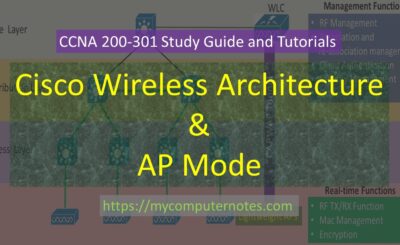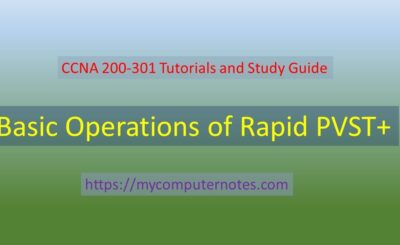This section will explain what is OSI model in the computer network and the different layers of the OSI model.
What is OSI Model
OSI stands for Open System Interconnection.
In a computer network, the OSI Model is defined as a reference model to standardize the communication between the different networks using different network hardware and applications developed by different vendors. It is a conceptual model developed by ISO ( International Organization for Standardization) in the late 70s. It provides a basic architecture for internetworking communications between two different systems. OSI model also provides a clear vision of how actual data is being transmitted from the sender to the receiver. It follows a layered approach to understand the data communication between two systems deeply and each layer defines a number of different network protocols that are responsible for communication with its peer at the remote ends as well as provides services to its adjacent layers.
The OSI Model is divided into 7 distinct layers as follows:
- Application layer
- Presentation layer
- Session layer
- Transport layer
- Network layer
- Datalink layer
- Physical layer
Application Layer
It is the highest and the seventh layer of the OSI model. It provides the interface between the end-user and the network services like email, sharing data files, web browsing, telnet, DNS, DHCP, etc. The application layer helps the end-user and the software to get access to the network.
Various protocols are used by the Application layer namely, HTTP (HyperText Transfer Protocol), SMTP (Simple Mail Transfer Protocol), IMAP (Internet Message Access Protocol), Telnet, DHCP (Dynamic Host Configuration Protocol), DNS (Domain Name System), FTP ( File Transfer Protocol) and so on.
Presentation Layer
It is the sixth layer of the OSI model and deals with the syntax and semantics of the information exchanged between the two entities. The major functions of Presentation layer are : translation, encryption/decryption and compression/decompression.
- Translation: The information exchanges between the devices may be in the form of characters, strings, numbers, and so on. So, they must be translated into a common format, as different computers use their own encoding system. Hence, the presentation layer helps to provide interoperability between different encoding systems by translating them into common encoding formats like ASCII or EBCDIC.
- Encryption/decryption: The information exchanged between the two systems may contain secured or sensitive data. Hence, to maintain the privacy of such sensitive information, encryption is done at the sending end and the decryption is performed at the receiving end so that the process is reversed to get back the information to its original form.
- Compression/decompression: The information to be carried may be in the form of text, audio, and video files which are of varying large sizes. Therefore, data compression reduces the size of the information and then transmitted it to the receiver. The decompression process is done at the receiving end to recover the compressed information.
Session Layer
It is the fifth layer of the OSI model. The role of the session layer is to establish, maintain, monitor, and synchronize the dialogue control between the two sessions.
The major functions of the session layer are :
- Dialogue control: The session layer allows two systems to initiate communication in half-duplex or full-duplex.
- Token management: The session layer prevents two systems to perform operations at the same time.
- Synchronization: Synchronisation takes place between two hosts in order to recognize each other.
Transport Layer
It is the fourth layer of the OSI model and deals with the process process communication between the two systems.
The transport layer receives the data from the upper layer, breaks down them into smaller uniform units called segments, and passes them into the network layer.
The major functions of the Transport layer are :
- Segmentation and reassembly: Data received from the upper layer is broken down into smaller units of fixed sizes called segments. Each segment is tagged with the sequence numbers so that the transmitted segment can be reassembled correctly at the destination end.
- Service point addressing: The transport layer deals with the process to process communication between the systems for which it uses the service point address or port address ( port number) to distinguish the specific process.
- Connection control: The types of connections are used by the transport layer namely: connection-oriented and connectionless.
The connection-oriented transport layer, at first, establishes the connection between the source and destination. Each segment transmitted to the destination is ensured that the segment is received correctly or not. The sender retransmits the same segment again and again until the acknowledgement is received by the sender. It uses the connection-oriented protocol TCP ( Transmission Control Protocol). This protocol is considered to be a reliable protocol. But, it is a slower connection, hence cannot be used in real-time communication.
The connectionless transport layer does not wait for the acknowledgement of the packet received by the destination node. It just assumes that the packet has been reached the destination just fine and keep on sending the consecutive packet without waiting for acknowledgement. There is no need of establishing a connection between the source and destination. Hence, it is called connectionless. It is also called unreliable because there is no guarantee of the delivery of data packets. However, it provides faster communication between devices other than connection-oriented transmission. Hence, connectionless transmission is used in real-time communication like Live video streaming, video conferencing, etc. UDP (User Datagram Protocol) is the most important connectionless protocol used in the transport layer.
Network Layer
Another important layer of the OSI model is the network layer which is responsible for the delivery of packet from source to destination across communication network using multiple links. IP (Internet Protocol) is the key protocol in the network layer that provides a logical addressing scheme for moving data packets from source to destination. Every node in a network is uniquely identified by its respective IP address. Hence, the network layer adds source IP address and destination IP address to the PDU received from the transport layer.
The router is a vital network layer device that acts as a network controller and routes the packet to its desired destination.
Datalink layer
It is layer 2 of the OSI model and responsible for reliable node-to-node delivery of data packets. The data link layer adds a physical (mac)address to the packet received from the network layer to create frames. Other than adding mac address in the frame header, the data link layer also adds a frame check sequence to its trailer for error-free delivery of data frames from source to destination.
The data link layer is further subdivided into two distinct sub-layer.
- LLC (Logical link control ) sublayer
- MAC (Media Access Control) sublayer
LLC sublayer provides the interface between the multiple network layer protocols like internet protocol and the media access methods using multiplexing techniques. It is responsible for error control and the end to end flow of frames.
MAC sublayer is responsible for adding the physical address to the data packets from the upper layer to constitute frames. It also provides an interface between the LLC sublayer and the physical layer of the OSI model. It acts as a multiple channel access mechanism for different transmission technologies.
Physical layer
It is the lowermost layer or layer 1 of the OSI model and is responsible for the physical connectivity of two different nodes for data communication. It converts digital data into streams of raw bits and transmits them through communication media in the form of electrical or optical signals. different types of encoding techniques are used to transmit these strings of 0’s and 1’s through the transmission channel.
| ← Prev | Next → | |
| Transmission Media and its Types | TCP/IP Protocol Suite |






